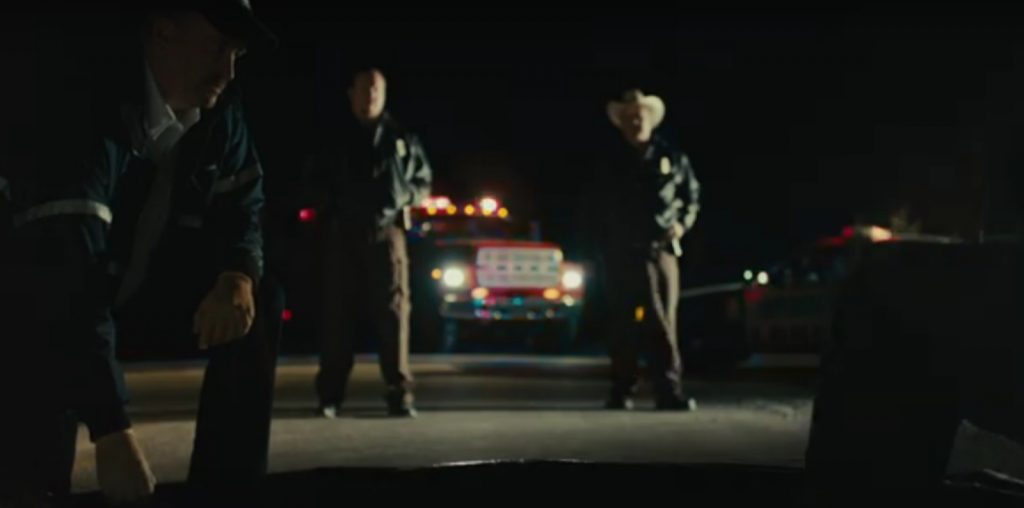
“Ace in the Hole” was one of the more curious endeavors in the career of Billy Wilder. The film was a commercial failure when first presented under its original title of “The Big Carnival” (the name-change was done to erase memories of the box office tanking in order to push a re-release) and Wilder would later dismiss the production as his “runt” since it was his first flop after a string of instant classics including “The Lost Weekend” and “Sunset Boulevard.” Yet over the years “Ace in the Hole” has achieved a classic status among critics who claim that Wilder was eons ahead of his time in this tale of venal media manipulation.
Coming back yet again to the big screen in an engagement at New York’s Two Boots Pioneer Theater, “Ace in the Hole” today seems to have attained its classic status out of respect for the Wilder oeuvre rather than its own worthiness. With bad acting and sledgehammer-subtle clumsiness, it appears the film gained a level excessively out of measure.
The world of “Ace in the Hole” separates mankind into two unequal camps: a minority of sharks who prey and exploit and a majority of dopes who get suckered and abused. Chief among the sharks is disgraced newspaper writer Chuck Tatum (Kirk Douglas), who has been fired from so many publications that the only place he can find employment is at a sleepy daily in Albuquerque, New Mexico. Tatum is eager for a single big-break story which can propel him back to A-list journalism assignments and his chance comes when he accidentally learns about a cave-in at an Indian cliff dwellings which trapped a souvenir store/diner owner (Bob Arthur) who went deep into the rocks looking for Indian artifacts. Taking a cue from the infamous exploitation of the 1920s caved-in miner Floyd Collins, Tatum immediately orchestrates a media frenzy around the accident. With the too-willing assistance of the trapped man’s indifferent wife (Jan Sterling) and a corrupt sheriff (Ray Teal), Tatum has the rescue operation is intentionally slowed down to prolong the victim’s imprisonment underground, resulting in profits across the board: financial success for the wife as the store and diner are packed, political image building for the sheriff who is presented as a hero in the rescue, and a professional resurrection for the once-unemployable Tatum.
Some critics cite “Ace in the Hole” as predicting the overkill media coverage which has become commonplace in today’s scandal-hungry news world. But media frenzies were hardly rare when “Ace in the Hole” first premiered; indeed, one could argue the depth and scope of the coverage of the Fatty Arbuckle trials or the Lindbergh baby case would make the coverage of O.J. Simpson and Monica Lewinsky look pale in comparison. Nor was the case against an overactive press invented for the screen with “Ace in the Hole”–the 1931 film version of “The Front Page” and the 1937 comedy “Nothing Sacred” got their much earlier and with more than enough cynicism to make Wilder look like a Pollyanna.
“Ace in the Hole” is not so much cynical as it is sour. It is the very rare film where there is a complete lack of likeable characters. Even the trapped man is something of a louse–he admits to excavating for Indian artifacts within caves that were considered sacred to the local tribe. Diluting credibility further is having the trapped man’s wife as a sarcastic shrew who uses her husband’s predicament to pack her bags and try to hop a bus out of town, finally escaping from a miserable marriage in an isolated New Mexico hell. She is brought back, however, by Tatum’s promise of wealth from the accident and soon begins smirking as she reels in cash from the curious onlooker who pay to camp outside the dwellings where her husband is buried. The role is badly written, to be certain, and perhaps a better actress than the normally stolid Jan Sterling could have found depth in the character. Sadly, the platinum blonde Sterling gives the performance nothing but a sneer and a heavy Noo Yawk accent, making her seem more like a malevolent impersonation of Judy Holliday than a genuine person.
Yet Sterling is no match for Kirk Douglas. Indeed, no one could ever be a match for Kirk Douglas when he chomps his way into an overwrought role. As the journalist at the heart of the exploitation process, Douglas invests every trick in the acting digest into the film. With gnashing teeth, glaring eyes, cruel hand gestures and a chip-on-the-shoulder defiance against good manners and good taste, his performance is clearly the fuel source for Frank Gorshin’s celebrated high-energy impersonation of the dimple-chinned star. Douglas outacts everyone within camera range, going further and further into outlandish behavior that it would be impossible to imagine any real man behaving in such an over-the-top manner. Indeed, Douglas did a better parody of himself than Frank Gorshin: his on-screen persona crosses the border of self-parody. The one-two punch of Sterling and Douglas diminishes all of the other actors, who barely register on screen (although one can catch an uncredited Iron Eyes Cody in the opening sequence as a long-haired Indian copy editor).
“Ace in the Hole” is not without Billy Wilder’s trademark razor command of the language. Lines like “He was a good looking kid in his uniform–him and eight million other guys” brim with the Wilder malice and sarcasm. There is even a wonderfully sly sight gag when a carnival caravan from “The Great S&M Amusement Company” rolls into the ground surrounding the mountainside where the man lies buried alive. But to what avail? “Ace in the Hole” is so ham-handed and relentlessly overbaked that it is easy to see why audiences initially stayed away from it. Just when and how did anyone come to see this as a classic? Perhaps coming to it today on the big screen, audiences may be able to look beyond the gush and sighs of cine-snobs who’ve pinned “classic” on the film and judge it for what it really is and what the director said it was: Wilder’s runt.


LOL, what a laughably dimwitted review.